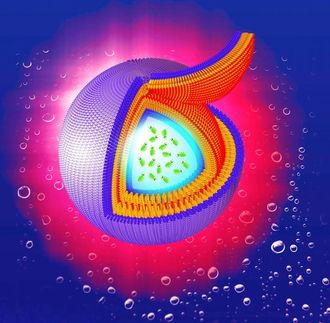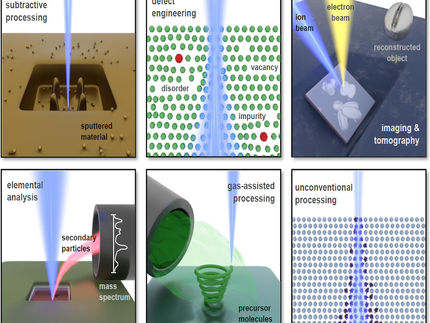Using supercomputer and chemistry to solve global problems
Ames Laboratory research expected to produce terabytes of new data on global warming and water purification
Advertisement
Depending on how they form and their chemical composition, clouds reflect and absorb varying amounts of the sun's energy. That makes them key players in global climate change. Yet the complex molecular processes underlying cloud formation are little understood. Now, a team of researchers at the U.S. Department of Energy's Ames Laboratory has been awarded the opportunity to study the problem, using one of the world's most powerful supercomputers, located at another DOE facility, Argonne National Laboratory, in Illinois.
"We know that clouds are formed by aerosol particles," said the team's principal investigator, Theresa Windus, associate scientist at Ames Laboratory and a professor of chemistry at Iowa State University. "The composition of the aerosols determines if a cloud is made up of a lot of small particles or large particles, which in turn impacts the size of clouds, their longevity and the probability they will produce rain."
Other scientists taking part in the research include: Mark Gordon, director of the Applied Mathematics and Computational Sciences program at the Ames Laboratory and Frances M. Craig distinguished professor of chemistry at ISU; Monica Lamm, Ames Lab associate scientist and ISU assistant professor at the Department of Chemical and Biological Engineering; and Michael Schmidt, Ames Laboratory associate chemist.
The team recently received the DOE's coveted Innovative and Novel Computational Impact on Theory and Experiment (INCITE) award, allowing them access to 8 million processor hours on Argonne's IBM Blue Gene supercomputer. The amount of processing time is perhaps best understood if you consider a city of 8 million people, in which everyone uses their personal computers to work on the same problem for one hour.
In fact, the award received by the Ames Lab team is part of a total of 1.6 billion hours of supercomputing time granted to 69 research teams by the DOE as part of the INCITE program. Performing research on ultra-high-speed computers allows "scientists and engineers to conduct cutting-edge research in just weeks or months rather than the years or decades needed previously," according to a DOE statement on the INCITE program. "This facilitates scientific breakthroughs in areas such as climate change, alternative energy, life sciences, and materials science."
The group's work is expected to generate terabytes worth of novel data. And while other researchers will be able to draw upon that data for future environment-related work, the sheer volume of information available to them may in itself present challenges.
In addition to modeling aerosol formation, the Ames Lab team will use their allotted supercomputer time to simulate the bulk properties of water. As with the group's work in the area of aerosol formation, the highly detailed modeling of the ways water behaves will provide benchmark data that will greatly facilitate further research into green chemistry, climate change and related areas.
A third portion of the group's allotted computer time will consist of running simulations aimed at better understanding how dendrimers, a kind of polymer, can be used to decontaminate water, an effort that could be of significance to millions of people who live in water-deprived developing nations.

































































